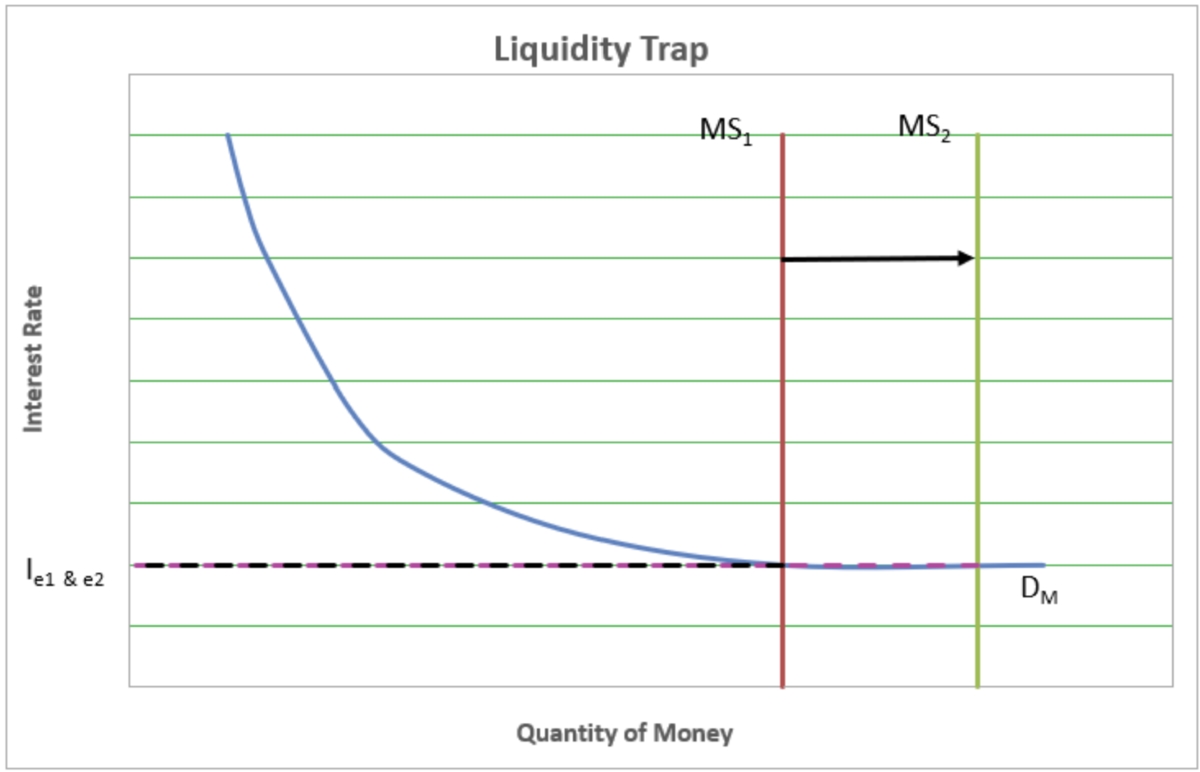

Finance
What Measures Liquidity?
Published: February 23, 2024
Learn about the measures of liquidity in finance and how they impact the financial health of a business. Understand the key metrics used to assess liquidity.
(Many of the links in this article redirect to a specific reviewed product. Your purchase of these products through affiliate links helps to generate commission for LiveWell, at no extra cost. Learn more)
Table of Contents
Introduction
Liquidity is a fundamental aspect of financial management that measures a company's ability to meet its short-term obligations. In essence, it evaluates how easily assets can be converted into cash to cover immediate liabilities. This critical financial metric is a key indicator of a company's financial health and stability. Understanding liquidity is essential for investors, creditors, and management to assess the short-term solvency and operational efficiency of a business.
Liquidity is pivotal in ensuring that a company can navigate through financial challenges, capitalize on opportunities, and maintain a strong financial position. It is a cornerstone of financial analysis, providing insights into a company's ability to honor its financial commitments without disrupting its day-to-day operations.
In the following sections, we will delve into the significance of liquidity, explore various liquidity ratios, and elucidate their roles in evaluating a company's financial standing. Understanding these liquidity measures is vital for making informed investment decisions, assessing the financial stability of a company, and ensuring sustainable business operations.
Importance of Liquidity
Liquidity is paramount for the smooth functioning of any business. It represents the ability of a company to meet its short-term financial obligations as they come due, without incurring significant losses. The importance of liquidity can be observed through several key aspects:
- Operating Efficiency: Adequate liquidity ensures that a company can efficiently manage its day-to-day operations, such as paying suppliers, meeting payroll, and funding essential business activities. This operational fluidity is crucial for sustaining business momentum and fostering growth.
- Financial Flexibility: A liquid company has the flexibility to seize strategic opportunities, such as favorable investment prospects or potential acquisitions, without being constrained by a lack of readily available funds.
- Creditor Confidence: Maintaining a healthy level of liquidity instills confidence in creditors and suppliers, as it demonstrates the company’s ability to honor its financial obligations on time. This, in turn, can lead to favorable credit terms and improved relationships with stakeholders.
- Investor Perception: Investors are attracted to companies with strong liquidity positions, as it signifies stability and the ability to weather economic downturns or unforeseen challenges. A robust liquidity position can enhance investor confidence and support a company’s stock valuation.
- Risk Mitigation: Adequate liquidity serves as a buffer against unexpected financial setbacks, providing a safety net to navigate through turbulent economic conditions or industry-specific challenges.
Ultimately, liquidity is the lifeblood of a company’s financial health, influencing its ability to sustain operations, pursue growth opportunities, and navigate through both favorable and challenging economic conditions. By comprehending the significance of liquidity, stakeholders can make informed decisions that contribute to the long-term viability and success of the business.
Liquidity Ratios
Liquidity ratios are key financial metrics that provide insights into a company’s ability to meet its short-term obligations using its current assets. These ratios are pivotal in assessing the financial health and operational efficiency of a business. By analyzing liquidity ratios, investors, creditors, and management can gauge the company’s ability to manage its short-term liabilities and fund its day-to-day operations. Several primary liquidity ratios are commonly utilized to evaluate a company’s liquidity position, including the current ratio, quick ratio, cash ratio, operating cash flow ratio, and working capital ratio.
These liquidity ratios serve as vital tools for financial analysis, offering a comprehensive view of a company’s short-term solvency and its capacity to address immediate financial demands. Understanding the nuances of these ratios is essential for making informed financial decisions and evaluating a company’s overall financial stability.
In the subsequent sections, we will delve into each of these liquidity ratios, elucidating their significance and the unique insights they provide into a company’s liquidity position. By comprehensively exploring these ratios, stakeholders can gain a holistic understanding of a company’s short-term financial capabilities and make well-informed assessments of its financial strength.
Current Ratio
The current ratio is a fundamental liquidity ratio that assesses a company’s ability to meet its short-term obligations using its current assets. It is calculated by dividing the total current assets by the total current liabilities. The formula for the current ratio is as follows:
Current Ratio = Total Current Assets / Total Current Liabilities
The current ratio provides valuable insights into a company’s short-term solvency, indicating whether it possesses sufficient current assets to cover its current liabilities. A current ratio exceeding 1 suggests that the company has more current assets than current liabilities, signifying a healthy liquidity position. However, an excessively high current ratio might indicate underutilized assets, potentially pointing to inefficiencies in asset management.
Conversely, a current ratio below 1 may raise concerns about the company’s ability to meet its short-term obligations, signaling potential liquidity challenges. While a low current ratio does not necessarily imply insolvency, it necessitates a closer examination of the company’s liquidity management and financial strategies.
The ideal current ratio varies across industries, and a thorough comparative analysis with industry benchmarks is essential for contextual interpretation. Additionally, trends in the current ratio over time can offer valuable insights into a company’s evolving liquidity position and its ability to adapt to changing market dynamics.
By comprehending the nuances of the current ratio and its implications, stakeholders can make informed assessments of a company’s short-term liquidity and its capacity to honor immediate financial commitments. This ratio serves as a pivotal tool for financial analysis, contributing to a holistic understanding of a company’s financial health and stability.
Quick Ratio
The quick ratio, also known as the acid-test ratio, is a crucial liquidity metric that provides insights into a company’s ability to meet its short-term liabilities using its most liquid assets. It offers a more stringent assessment of liquidity than the current ratio by excluding inventory from the current assets. The quick ratio is calculated using the following formula:
Quick Ratio = (Cash and Cash Equivalents + Marketable Securities + Accounts Receivable) / Total Current Liabilities
The quick ratio focuses on the most liquid assets that can be readily converted into cash to settle immediate obligations. By excluding inventory, which may not be as easily convertible to cash, the quick ratio offers a conservative perspective on a company’s liquidity position. A quick ratio exceeding 1 indicates that the company can fully cover its current liabilities using its highly liquid assets, reflecting a robust liquidity position. Conversely, a quick ratio below 1 may raise concerns about the company’s short-term solvency and its ability to address immediate financial demands.
Similar to the current ratio, the ideal quick ratio varies across industries, and benchmarking against industry standards is crucial for meaningful interpretation. Additionally, trends in the quick ratio over time provide valuable insights into changes in a company’s liquidity position and its capacity to adapt to evolving market conditions.
Understanding the nuances of the quick ratio empowers stakeholders to make informed assessments of a company’s short-term liquidity and its ability to manage immediate financial obligations. This metric serves as a vital tool for financial analysis, contributing to a comprehensive evaluation of a company’s financial health and operational resilience.
Cash Ratio
The cash ratio is a critical liquidity measure that focuses exclusively on a company’s ability to cover its short-term liabilities using its most liquid assets, specifically cash and cash equivalents. This ratio provides a stringent assessment of a company’s immediate solvency and its capacity to meet short-term obligations without relying on the sale of inventory or receivables. The cash ratio is calculated using the following formula:
Cash Ratio = (Cash and Cash Equivalents) / Total Current Liabilities
A cash ratio exceeding 1 indicates that the company holds sufficient cash and cash equivalents to fully cover its current liabilities, signifying a robust liquidity position. This implies that the company can honor its short-term obligations without relying on the conversion of other assets into cash. On the other hand, a cash ratio below 1 may raise concerns about the company’s immediate solvency and its ability to address short-term financial demands using its readily available cash resources.
Given its exclusive focus on cash and cash equivalents, the cash ratio provides a conservative assessment of a company’s liquidity position, emphasizing the importance of highly liquid assets in meeting short-term obligations. While the cash ratio is a stringent measure of liquidity, it is essential to interpret it in conjunction with other liquidity ratios to gain a comprehensive understanding of a company’s short-term financial capabilities.
Understanding the nuances of the cash ratio empowers stakeholders to make informed assessments of a company’s immediate liquidity and its ability to manage short-term financial commitments. This metric serves as a vital tool for financial analysis, contributing to a holistic evaluation of a company’s financial health and its resilience in addressing immediate financial demands.
Operating Cash Flow Ratio
The operating cash flow ratio is a key liquidity metric that assesses a company’s ability to cover its short-term liabilities using its operating cash flow. This ratio provides insights into a company’s capacity to generate sufficient cash from its core operations to meet immediate financial obligations. The operating cash flow ratio is calculated using the following formula:
Operating Cash Flow Ratio = Operating Cash Flow / Total Current Liabilities
A higher operating cash flow ratio indicates that the company can comfortably cover its current liabilities using the cash generated from its operating activities, reflecting a strong liquidity position. This underscores the company’s ability to fund its short-term obligations without relying on external financing or the liquidation of long-term assets. Conversely, a lower operating cash flow ratio may raise concerns about the company’s ability to generate adequate cash from its core operations to address immediate financial demands.
By focusing on the cash generated from operating activities, the operating cash flow ratio offers insights into a company’s operational efficiency and its capacity to sustain its short-term liquidity through its day-to-day business operations. It provides a distinct perspective on liquidity, emphasizing the importance of cash flow from core business activities in meeting short-term financial commitments.
Interpreting the operating cash flow ratio in conjunction with other liquidity metrics provides a comprehensive understanding of a company’s short-term financial capabilities and its ability to navigate through immediate liquidity challenges. This ratio serves as a vital tool for financial analysis, contributing to a holistic evaluation of a company’s liquidity position and its operational resilience.
Working Capital Ratio
The working capital ratio, also known as the net working capital ratio, is a fundamental liquidity measure that evaluates a company’s ability to meet its short-term obligations using its working capital. It provides insights into the adequacy of a company’s current assets in covering its current liabilities. The working capital ratio is calculated using the following formula:
Working Capital Ratio = (Current Assets – Current Liabilities) / Total Current Liabilities
A higher working capital ratio indicates that the company’s current assets exceed its current liabilities, reflecting a strong liquidity position and the capacity to comfortably cover short-term obligations. This suggests that the company possesses a sufficient buffer of current assets to address immediate financial demands without relying on external financing or asset liquidation. Conversely, a lower working capital ratio may raise concerns about the company’s ability to meet its short-term liabilities using its current assets.
By focusing on the net working capital, which represents the difference between current assets and current liabilities, the working capital ratio offers insights into the company’s short-term financial resilience and its ability to manage immediate liquidity requirements. It underscores the importance of maintaining a healthy working capital position to sustain operational liquidity and financial stability.
Interpreting the working capital ratio in conjunction with other liquidity metrics provides a comprehensive understanding of a company’s short-term financial capabilities and its capacity to navigate through immediate liquidity challenges. This ratio serves as a vital tool for financial analysis, contributing to a holistic evaluation of a company’s liquidity position and its operational resilience.
Conclusion
Liquidity ratios play a pivotal role in assessing a company’s short-term financial strength and operational resilience. These key metrics offer valuable insights into a company’s ability to meet its immediate financial obligations and manage its day-to-day liquidity. By comprehensively understanding and analyzing liquidity ratios, stakeholders can make informed assessments of a company’s financial health and stability, contributing to sound investment decisions, effective financial management, and sustainable business operations.
The current ratio, quick ratio, cash ratio, operating cash flow ratio, and working capital ratio each provide unique perspectives on a company’s liquidity position, emphasizing the importance of current assets, highly liquid assets, and operating cash flow in meeting short-term liabilities. These ratios serve as essential tools for financial analysis, enabling stakeholders to gauge a company’s ability to navigate through immediate liquidity challenges and capitalize on strategic opportunities.
It is important to note that while liquidity ratios offer valuable insights, they should be interpreted in conjunction with other financial metrics and industry-specific considerations to gain a comprehensive understanding of a company’s financial standing. Additionally, trends in liquidity ratios over time provide valuable indications of a company’s evolving liquidity position and its adaptability to changing market conditions.
By leveraging the insights provided by liquidity ratios, stakeholders can enhance their ability to assess a company’s financial stability, evaluate its short-term solvency, and make well-informed decisions that contribute to the long-term success and resilience of the business.
Understanding the nuances of liquidity ratios empowers stakeholders to navigate the dynamic landscape of financial analysis, fostering a deeper comprehension of a company’s liquidity position and its capacity to address immediate financial demands. Ultimately, liquidity ratios serve as indispensable tools for financial assessment, guiding stakeholders in making informed decisions that underpin the sustainable growth and stability of businesses.














